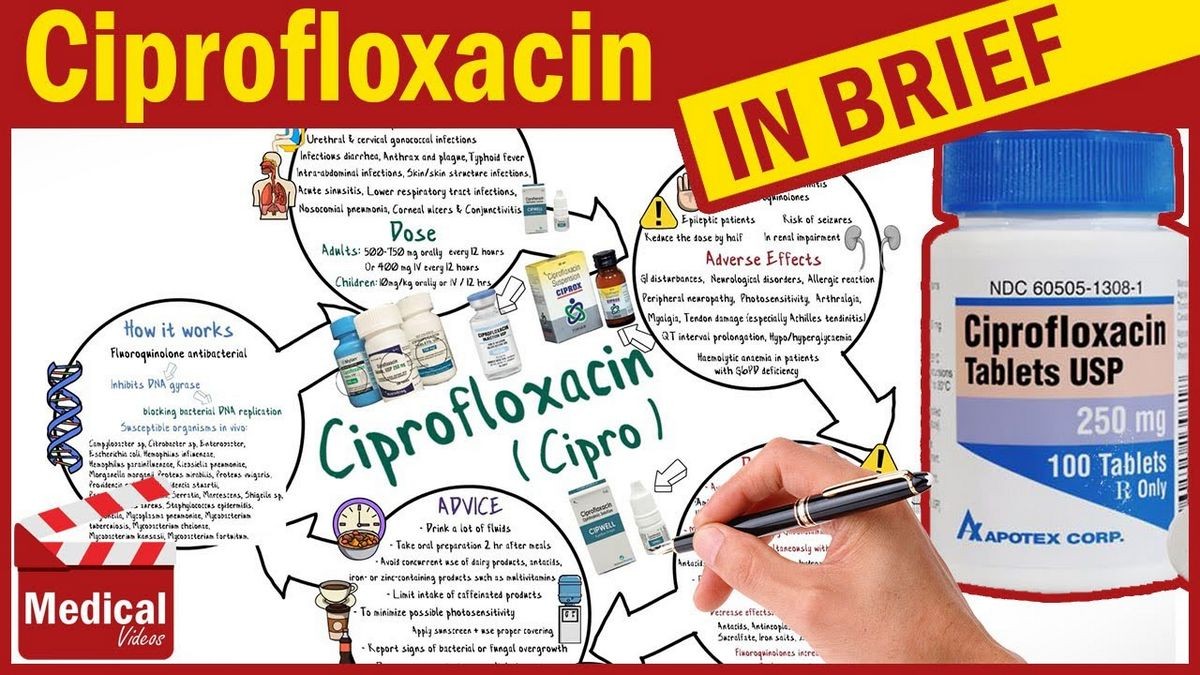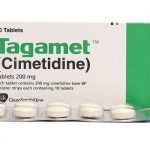
Contents
Cipro, Cipro XR Antibiotic
Ciprofloxacin is an antibiotic used to treat bacterial infections. It stops bacteria from multiplying by inhibiting the repair of their DNA. The FDA approved ciprofloxacin in October 1987.
Ciprofloxacin belongs to the fluoroquinolone class of antibiotics. Other antibiotics in this class include:
- levofloxacin (Levaquin)
- ofloxacin (Floxin)
- gatifloxacin (Tequin)
- norfloxacin (Noroxin)
- moxifloxacin (Avelox)
- trovafloxacin (Trovan)
Doctors prescribe Cipro and Cipro XR to treat bacterial infections such as:
- Skin infections
- Lung or airway infections such as TB (tuberculosis), pneumonic and septicemic plague caused by Yersinia pestis, lower respiratory tract infections, and chronic bronchitis
- Bone infections
- Joint infections
- Urinary tract infections caused by E. coli
- Infectious diarrhea caused by E. coli, Campylobacter jejuni, and Shigella bacteria
- Anthrax patients with fever and low white blood cell counts, and intra-abdominal infections
- Typhoid fever
- Cervical and urethral gonorrhea caused by Neisseria gonorrhoeae
- Chronic bacterial prostatitis
- Acute uncomplicated cystitis
Warnings
Fluoroquinolones should not be used to treat certain infections unless there are no other alternatives. These infections include:
- Uncomplicated urinary tract infections (UTI)
- Acute bacterial exacerbation of chronic bronchitis
- Acute bacterial sinusitis
Cipro and Cipro XR, along with other antibiotics in the fluoroquinolone class, have been associated with tendonitis and tendon rupture, particularly affecting the Achilles tendon. Some doctors recommend avoiding vigorous exercise while taking these antibiotics.
Fluoroquinolones have neuromuscular blocking activity and can worsen muscle weakness in individuals with myasthenia gravis.
These antibiotics should not be used during pregnancy or breastfeeding due to safety concerns.
What are the side effects of Cipro?
The most common side effects of Cipro and Cipro XR are:
Anaphylaxis, or shock, is a rare allergic reaction to this drug. Seek immediate medical attention if you experience these symptoms.
Symptoms of shock include:
- Cardiovascular collapse
- Facial or throat swelling
- Shortness of breath
- Hives
- Itching
Possible serious side effects of Cipro and Cipro XR include:
- Peripheral neuropathy
- Central nervous system effects such as toxic psychosis, nervousness, agitation, insomnia, anxiety, nightmares, paranoia, dizziness, tremors, depression, and hallucinations
- Hyperglycemia
- Clostridium difficile-associated diarrhea (CDAD)
- Abnormal heart beats
- Liver dysfunction
- Stroke
- Convulsions
- Toxic epidermal necrolysis
- Stevens-Johnson syndrome
- Vasculitis
- Allergic pneumonitis
- Interstitial nephritis
- Acute kidney failure
- Hepatitis
- Jaundice
- Liver failure
- Anemia
- Leukopenia
Other serious side effects and adverse events of Cipro and Cipro XR include:
- Use caution in patients with central nervous system diseases such as seizures, as rare seizures have been reported
- Avoid use in children and adolescents less than 18 years of age
- These antibiotics can alter the normal bacteria in the colon and encourage overgrowth of C. difficile bacteria, potentially leading to inflammation of the colon (pseudomembranous colitis). Contact a doctor immediately if signs of pseudomembranous colitis occur after starting Cipro or Cipro XR (diarrhea, fever, abdominal pain, and possibly shock)
- Cardiac arrest
- Respiratory failure
QUESTION
What is the dosage for Cipro?
Cipro dosage
- For most infections, the recommended oral dose for adults is 250-750 mg every 12 hours (immediate release tablets) or 500-1000 mg every 24 hours (extended release tablets)
- The usual intravenous dose is 200-400 mg every 8-12 hours
Preparations
- Tablets: 250, 500, and 750 mg
- Tablets extended release (XR): 500 and 1000 mg
- Microcapsules for suspension: 250 mg/5 ml, 500 mg/5 ml
- Injection or Injection concentrate: 200 mg/100 ml, 200 mg/20 ml, 400 mg/200 ml, 400 mg/40 ml
What drugs interact with Cipro?
- Theophylline administered together with ciprofloxacin can lead to elevated, toxic blood levels of theophylline. Frequent blood tests to monitor theophylline levels are recommended if concurrent use cannot be avoided
- Tizanidine (Zanaflex) can have an increased effect when combined with ciprofloxacin, so the two drugs should not be combined
- Iron salts and antacids may reduce the absorption of ciprofloxacin. If patients are taking iron salts or antacids, ciprofloxacin should be given two hours before or six hours after
- Ciprofloxacin may increase the blood thinning effect of warfarin (Coumadin, Jantoven). Anticoagulant activity should be monitored after starting or stopping ciprofloxacin
- Sevelamer (Renagel) may reduce the absorption of ciprofloxacin. Milk and orange juice may also reduce the absorption of ciprofloxacin. Ciprofloxacin should be given two hours before or six hours after milk or orange juice
- Administration of ciprofloxacin with diabetic medications such as glyburide (Micronase, Diabeta, Glynase, Prestab) may lead to severe low blood glucose
- Ciprofloxacin may increase blood concentrations of sildenafil (Viagra), so this combination should be avoided if possible
- Patients taking Cipro and Cipro XR may develop sensitivity of the skin to direct sunlight (photosensitivity) and should avoid exposure or use sunblock
- Fluoroquinolones worsen low blood glucose levels when combined with sulfonylureas, such as glyburide (Micronase, Diabeta, Glynase, Prestab)
What else should I know about Cipro?
- Storage: Tablets should be stored below 30 C (86 F). Extended release tablets should be stored between 15 C to 30 C (59 F to 86 F). Microcapsules should be stored below 25 C (77 F) and protected from freezing. Injections should be stored between 5 C to 30 C (41 F to 86 F) and protected from freezing
Summary
Ciprofloxacin (generic name), Cipro, Cipro XR (brand names) is an antibiotic used to treat many skin, lung, airway, bone, and joint infections caused by susceptible bacteria. Examples include complicated urinary tract infections (UTIs), gonorrhea, chronic bacterial prostatitis, typhoid fever, chronic bronchitis, infectious diarrhea caused by E. coli, Shigella, and Campylobacter jejuni, anthrax poisoning, and tuberculosis.


